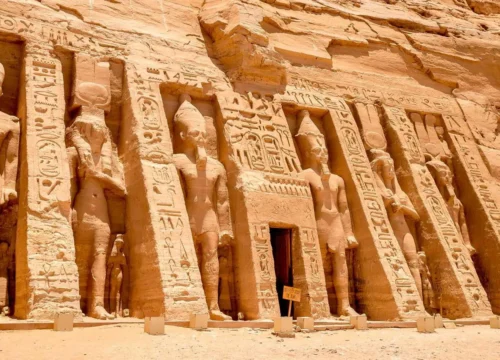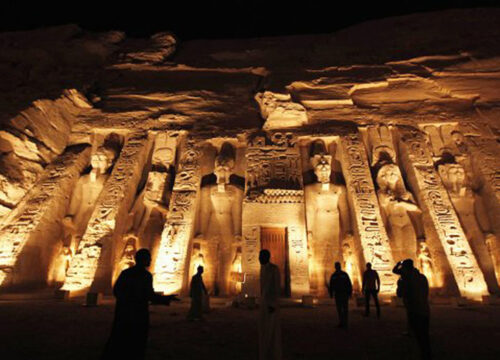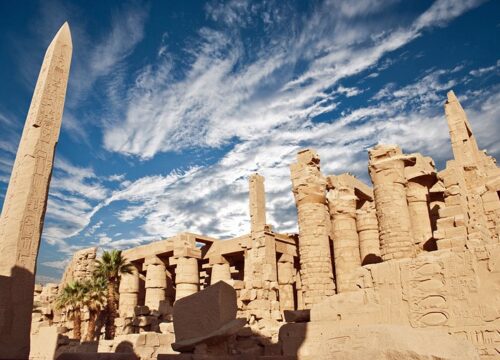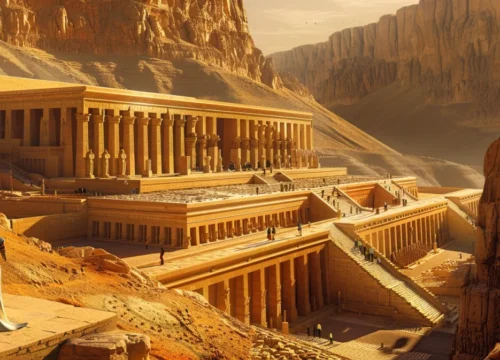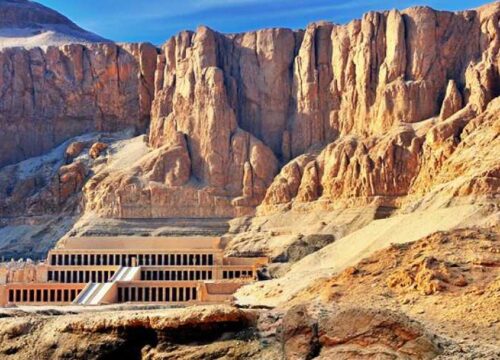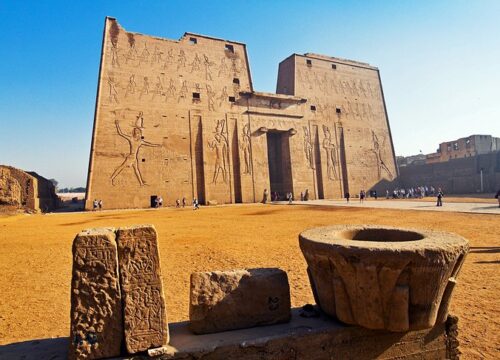Abu Simbel
- Home
- Abu Simbel
Duration
From
Tour Description
The Temple of Abu Simbel is one of the most iconic and awe-inspiring monuments of ancient Egypt, located on the shores of Lake Nasser in southern Egypt, near the border with Sudan. Commissioned by Pharaoh Ramses II in the 13th century BC, the temple complex consists of two massive rock-cut temples that celebrate the pharaoh’s victories and honor the gods.
The larger temple, known as the Great Temple of Ramses II, features an impressive facade adorned with four colossal statues of Ramses himself, each standing approximately 20 meters (66 feet) tall. These statues are meant to convey the pharaoh’s divine status and military prowess. The temple is dedicated to the deities Amun, Ra-Horakhty, and Ptah, and the inner sanctuary contains four seated figures: Ramses II, Amun, Ra-Horakhty, and Ptah, symbolizing the pharaoh’s connection to the gods.
The smaller temple, dedicated to Hathor, the goddess of love and motherhood, features a beautiful statue of Ramses II alongside his beloved wife, Nefertari. This temple is adorned with intricate carvings and reliefs that depict scenes of worship and celebration, showcasing Ramses II’s devotion to Hathor and his queen.
One of the most remarkable features of the Temple of Abu Simbel is its alignment with the sun. Twice a year, on February 22 and October 22, the sun’s rays illuminate the inner sanctuary, directly shining on the statues seated there. This astronomical phenomenon signifies the importance of solar worship in ancient Egyptian culture.
In the 1960s, the temples were at risk of being submerged due to the construction of the Aswan High Dam. To preserve these magnificent structures, an international campaign led by UNESCO successfully relocated the entire temple complex to higher ground, a remarkable engineering feat that ensured its protection for future generations.
Today, the Temple of Abu Simbel is a UNESCO World Heritage Site and a major tourist attraction, drawing visitors from around the globe who come to marvel at its grandeur and learn about the rich history of ancient Egypt. Its monumental scale, artistic detail, and historical significance make it a symbol of Egypt’s ancient civilization and a testament to Ramses II’s enduring legacy.
Included/Exclude
- Meet and assist at the airport
- Tour guide
- Transfers
- Entrance fees
- Egypt Entry Visa
- Tips
- Entrance inside the Pyramids
- Mineral water during Meals


